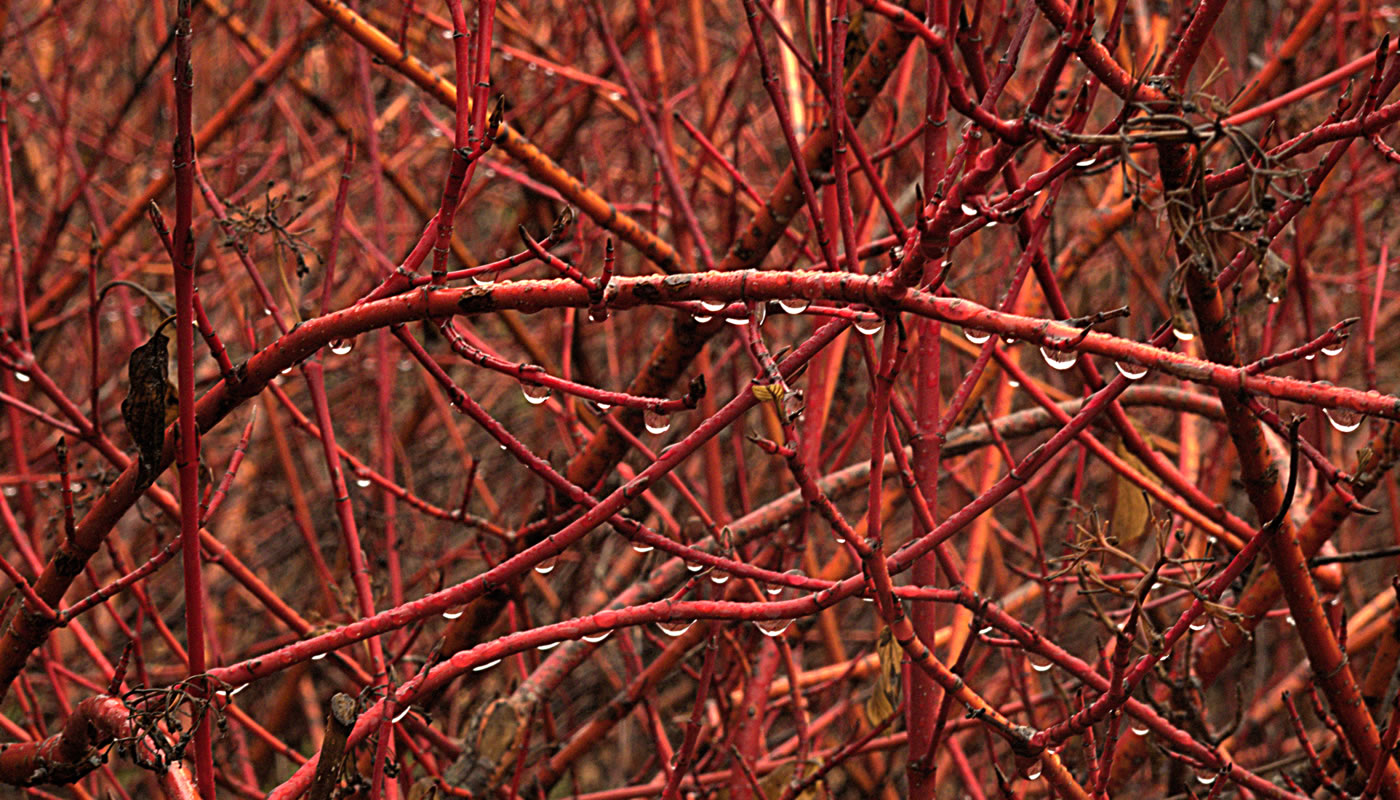Throughout the landscape, wintertime weather is often augmented by a color palette dominated by varying shades of brown and gray. And while many hikers enjoy viewing these winter landscapes with a light dusting of snow, others miss the lush greenery and vibrant colors typically seen throughout the forest preserves during spring and summer. For this reason, spotting red-osier dogwood (Cornus sericea) can be a real treat throughout the season. Red-osier dogwood most notably offers a welcome contrast to its surroundings because of the rich red color of the stems in winter.
This colorful native shrub can tolerate a wide range of soil conditions, explains Alex Palmer, a naturalist at Sand Ridge Nature Center, but is primarily found in wetlands. Red-osier dogwood can be found throughout Cook County, especially toward southeastern sections where soil tends to be sandier. Red-osier dogwood is also frequently found in association with blue-fruited dogwood, which looks almost identical, in southeast Cook County.
“Red-osier dogwood is a really hearty shrub; it’s easy to trim back and maintain, and doesn’t require much in terms of water or added nutrients,” says Palmer. “These reasons make it a great addition to native landscaping. Some of the Forest Preserves’ Nature Centers include the shrub in their native plant gardens.”
The plant is beneficial to a variety of wildlife. With two blooms, white flowers as well as white berries, pollinators, birds and mammals use red-osier dogwood as a food source. The shrub also serves as a host for Spring Azure butterflies.
The shrub has some recognizable close relatives, as well. Many people may be familiar with the more popular but ornamental flowering dogwood (Cornus florida), which is an understory tree native to southern states and can also be found in mesic woodlands and swamps in northwest Indiana.

